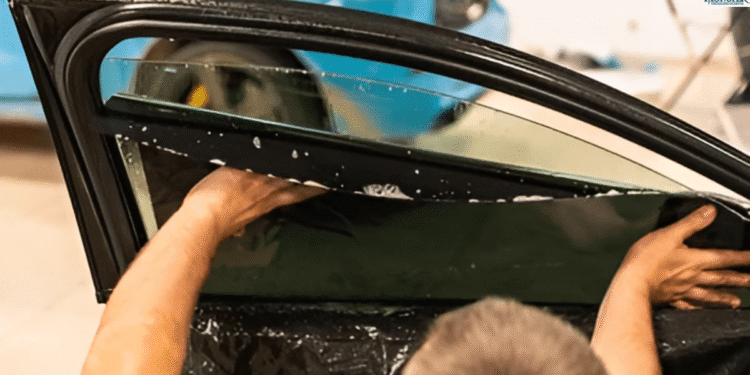Automotive tinting is more than an accessory; it’s an upgrade that combines form and function. Tinting provides many benefits beyond the superficial look, making it a wise choice for thoughtful vehicle enhancement. Tinting becomes necessary in places like ceramic coating for cars in San Rafael, CA, where the sun can be unyielding.
Beyond aesthetics, window tinting is grounded in a beneficial science, improving driving comfort and safety. Various types of films cater to different needs and price points, offering flexibility for every vehicle owner. Understanding these options is crucial for making well-informed decisions.
Benefits of Window Tinting
Window tinting offers drivers meaningful lifestyle improvements, elevating comfort and protection. It dramatically enhances the interior atmosphere of a car by serving as a shield against intense sunshine and other environmental factors. While privacy is a key benefit, its capacity to block harmful UV rays and regulate cabin temperature makes it a practical necessity. As a Consumer Reports article highlights, tinted windows help preserve interior materials, extending the vehicle’s lifespan. When combined with options like automotive ceramic coating near me, drivers can achieve comprehensive protection for both the inside and outside of their car.
Privacy Enhancement
One of the most pronounced merits of window tinting is enhanced privacy. It ensures that daily commutes or parked moments remain unseen to external eyes. This function primarily benefits families or professionals who desire discretion during their travels.
UV Ray Protection
UV rays are notorious for their damaging effects, harming skin and degrading vehicle interiors. Tinted windows can mitigate these effects by blocking up to 99% of UV radiation. The benefits extend to safeguarding leather, fabrics, and electronics, ensuring your car remains pristine for extended periods.
Heat Reduction
Tinted windows make driving more comfortable by cutting down the heat that enters a vehicle. By reducing the need for air conditioning, this cooling effect lowers fuel use and energy consumption. Sustainable with economic advantages, tinting certainly makes a compelling case.
Types of Window Films
Selecting the right film type is integral to achieving the desired balance between style, protection, and functionality. Here’s a closer look at the standard options, each contributing significant advantages based on individual preferences and needs.
Dyed Window Film
As the most cost-efficient option, dyed window film offers aesthetic improvement and moderate shielding from solar gains. While less durable than other films, its affordability makes it a popular choice for cosmetic enhancement with some protection.
Metallized Window Film
This film uses metallic particles for superior reflection and heat rejection. It is favored for its robust strength and long lifespan, although it may interfere with electronic signals, a considerable factor for those reliant on in-car tech.
Ceramic Window Film
The ceramic film delivers on both fronts without influencing electronic signals, which is ideal for those seeking the best performance and clarity. It is a premium offering for users prioritizing maximum protection and durability.
The Science Behind Window Tints
How Tints Work
Window tints operate on a molecular level to maintain car interiors. They utilize layers of film that combine to reflect, absorb, and block the sun’s rays. The science involves advanced solutions to deliver safety and efficiency, with benefits beyond mere function.
Technological Advances
Continuous innovations have allowed newer films that offer added benefits, such as increased tensile strength for security and adaptive technologies that adjust shade according to the sun’s intensity. These advancements contribute not only to safety but also to energy savings.
Legal Considerations and Compliance
Navigating the legal landscape around window tints is crucial to avoid unnecessary fines and penalties. As regulations vary widely, most prominently in visible light transmission (VLT), using reliable sources like Autoweek’s tinting laws guide will help car owners maintain compliance effortlessly.
Installation Process: DIY vs. Professional
Benefits of Professional Installation
Professional installation offers advantages, including expertise and accuracy. It reduces typical problems like bubbling or misaligned colors. Technicians also guarantee their installation work, potentially saving more in the long term over failed DIY attempts.
Step-by-Step Guide for DIY Enthusiasts
If you opt for self-installation, having a meticulous approach is vital. Essential steps include thorough surface cleaning, precise film cutting, and employing a proper application technique using a squeegee. When executed carefully, this process can yield successful results, saving costs but requiring hands-on patience.
Maintaining Your Tinted Windows
Maintaining tint extends beyond installation. The use of appropriate cleaning materials ensures longevity. Avoiding harsh chemicals like ammonia ensures the film does not degrade, while regular upkeep prevents damage.
Cleaning Tips
Gentle cleaning with soft towels and soapy water is recommended. Abrasive tools should be avoided to maintain film integrity. Routine maintenance safeguards against unforeseen abrasions or other damage.
Dealing with Peeling or Bubbling
Early detection through periodic checks can prevent minor issues from turning catastrophic. Bubble formation or peeling might necessitate professional reapplication to restore and maintain visual clarity.
Troubleshooting Common Issues
From reduced visibility to the presence of bubbles, assessing root causes is vital for resolution. Identifying faulty application practices or material defects enables measured corrections, ensuring the tint performs optimally throughout its lifespan.
















